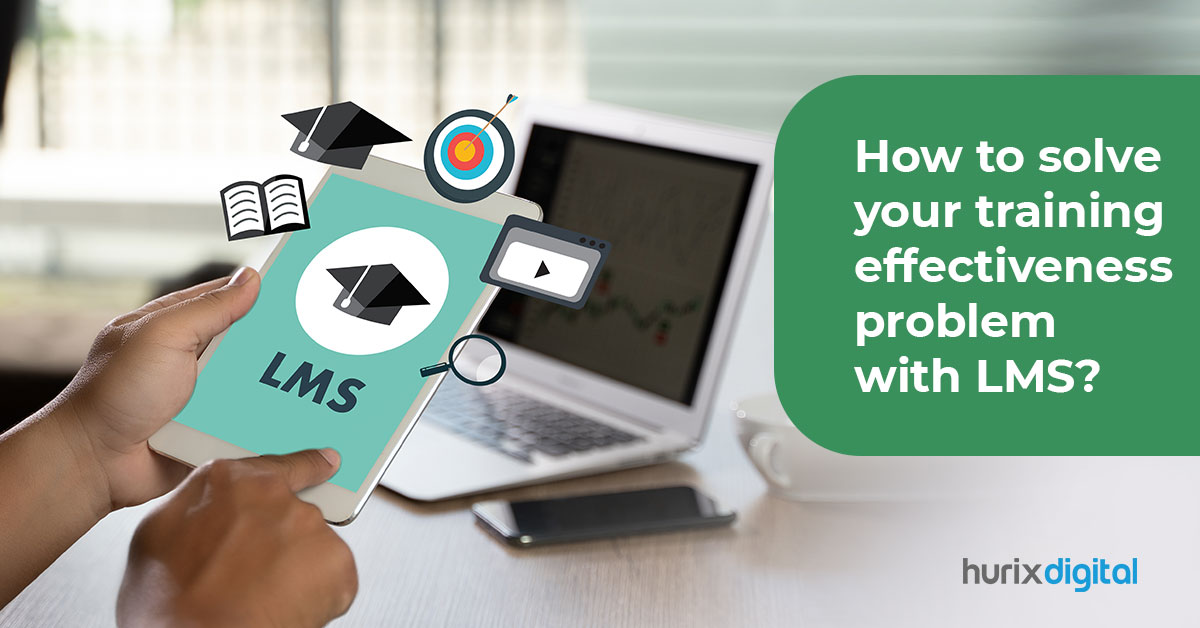
Top 5 LMS for K12 Education
Given the accelerated pace of most institutions today, learning management systems (LMS) are fast emerging as necessary tools in K12 educational spaces. LMSs simplify learning processes while promoting collaboration and the wide usage of educational resources in the virtual space. Because of this, more and more schools are adopting online and hybrid teaching models. Therefore, choosing an ideal LMS is essential to enhance student engagement, increase teaching effectiveness, and ensure smooth communication among instructors, students, and parents.
Table of Contents:
- What is a Learning Management System?
- How to Choose the Right LMS for K12 Education?
- Check Out the List of 5 LMS for K12 Education
- In Conclusion
What is a Learning Management System?
A learning management system (LMS) is software used to create, deploy, and deliver courses online. Most LMS today are cloud-based, allowing 24X7 access to course content from any location worldwide. The instructors and course admins can upload courses, assignments, homework, calendars, learning resources, and more on the LMS. They can also create forums and chat rooms to communicate with the students. Educators can also track student learning outcomes and access automated reports to analyze the effectiveness of a course and course delivery.
Educational institutions are increasingly adopting LMS tools to reach geographically dispersed learners and enable anytime and anywhere access to learning materials, allowing students to pursue full-time or part-time employment to pursue their degrees. A dedicated K12 LMS platform is also the ideal platform to disperse relevant supplemental material to students to enhance the education and training received in the classroom setting. Besides, it can also be used to deliver blended learning solutions combining classroom learning with online learning.
Some learning management systems specifically address the needs of K12 students. The main use of the K12 LMS platform is to streamline learning in schools. Students gain access to additional online resources and can revisit topics and learn at their own pace. The teachers spend less energy on creating learning resources and on administrative tasks and have more time at hand to spend with students. LMS for K12 learning also offers tools for online assessment in the form of tests and quizzes, which can be graded online based on predefined metrics.
Also Read: K12 Education in the Post-COVID Era
How to Choose the Right LMS for K12 Education?
A well-chosen LMS can greatly affect the way your students and teachers interact and respond to the educational courses. When you consciously and carefully select a proper LMS for your organization, you ensure a greater learning experience and teamwork, and also better data-driven decisions. The following pointers will help you decide on the right LMS:
1. Define Your Requirements
Before exploring specific LMS platforms, it is important to understand your institution’s goals. For example:
- What challenges do you aim to address with an LMS?
- Do you require a platform that supports blended learning, fully online classes, or both?
- What features are most important, such as grading automation, parent engagement tools, or content personalization?
Clear objectives will help you filter options and focus on platforms that fulfill your specific needs.
2. Prioritize User-Friendliness
An LMS should have a friendly interface for all students, teachers, and parents. To keep the K12 students engaged, having a visually strong interface is imperative to keep your student’s interest and attention. A platform with easy-to-use features can reduce frustration and increase adoption rates. To enhance usability, you can look for features like drag-and-drop functionality, simple dashboards, and interactive tutorials.
For instance, platforms like Google Classroom and Canvas prioritize user-friendly interfaces, ensuring students and teachers can access tools and resources without rigorous training.
3. Ensure Scalability and Flexibility
The LMS you choose should be scalable to accommodate growing student populations and evolving curriculum requirements. A flexible platform can adapt to changes in teaching methods and integrate with existing systems like student information systems (SIS).
Tools like Alma and Hurix LMS are designed with scalability in mind, making them suitable for institutions with long-term growth plans. Open-source options like Canvas provide customization possibilities to perfect the LMS for your needs.
4. Focus on Collaboration and Communication
A good LMS should encourage collaboration among students and educators while informing parents. Tools for discussion forums, group projects, and direct messaging enhance classroom interactions. Real-time updates, calendars, and announcements ensure everyone stays on the same page.
Canvas’ Parent App is a perfect example of how K12 learning management systems can enhance collaboration. It allows parents to monitor grades, assignments, and course progress, promoting greater involvement in their child’s education.
Check Out the List of 5 LMS for K12 Education
Here is a comprehensive list of the best K12 learning management systems you can use for your needs:
1. Google Classroom
The Google G Suite Platform is an LMS with several interesting tools and features. Students who are familiar with Google Docs, Sheets and Slides, and other Google tools will find it easy to use and transition to online learning. The software is free to use, requiring minimal IT resources to set up and keep it running. Educators can use it to post course material, set assignments, and carry out quizzes. Students have to set up their accounts since they can’t use their accounts to access the services. This limits access to the virtual space and keeps data secure.
This K12 learning management system supports compliance with industry regulations and best practices. However, Google Classroom is more about providing students with a personalized learning experience rhan managing it. Also ,keep in mind, thatGoogle Classroom is not a full LMS but ian be used as an add-on with other LLMSs,such as Schoology and Edmodo. Besides, it also meets the Learning Tool Interoperability (LTI) standards. The LMS works on iOS, Android, Mac, Windows, Chrome, and other browsers.
2. Alma
This LMS for K12 education provides learners with an intuitive learning experience based on their learning data. This K12 LMS platform also empowers educators to make data-driven decisions. This flexible and scalable solution can fit in with all school needs and budgets. Alma neatly combines a student information system and LMS, allowing all stakeholders to access timely and meaningful information.
Its modern and intuitive design makes it easy for administrators, teachers, students, and parents to easily and quickly access relevant information and take appropriate action. The LMS also offers schools a flexible technology infrastructure that can easily be integrated with their existing systems for a customized solution.
3. Blackboard Learn
This is a proprietary solution, which means hosting rights can only be provided by BlackBoard or leased to users. The platform is exclusively designed to increase student engagement, boost teachers’ productivity, and increase learners’ achievements. The LMS includes both synchronous and asynchronous learning tools and can also be integrated with productivity tools such as Google and Microsoft.
It has a responsive design and offers offline access to courses, thereby providing anywhere and anytime access. Blackboard Learn also has real-time data analytics and visualization to provide all stakeholders with the information they need to improve student’s learning outcomes. Students can also personalize the setting of the LMS interface to align with their personal preferences.
4. Canvas
This platform includes various learning tools to enhance the students’ learning experience. It has assessment tools to understand a student’s or class’s progress. Besides, it also helps to meet the student’s social and emotional needs. Canvas also includes the Canvas Parent App to allow parents to monitor the progress of their wards. This app is available on all mobile platforms, including iOS and Android.
The app enables greater parental engagement in learning by allowing them to view course grades, assignment grades, and course announcements. Canvas is an open-source LMS, which means the admin users can access the source code and make enhancements. Its features support easy video uploads, one-on-one student-teacher communication, and web conferencing with a larger audience.
5. Hurix LMS
Considered among the best K12 LMS, this proprietary K12 content management system can integrate with existing school information systems for a seamless learning experience. This cloud-based, best-in-class solution for content integration and curriculum management is designed to meet all 21st-century eLearning initiatives, including microlearning, mobile learning, social learning, and blended learning. This K12 learning management system platform meets all instructional needs of educators, including content development, course delivery, instructional activities, student assessment, data analysis, and reporting.
Teachers and school administrators can view student performance based on auto-generated data. This K12 platform is designed to allow educators to create interactive lessons and provide instructions in a highly visual and contextual setting. Students can also collaborate with peers and teachers and, thus, enjoy a highly engaging and immersive learning experience.
Also Read: 10 Benefits of Moodle-based Learning Management System (LMS)
In Conclusion
K12 educational institutions are increasingly using LMS platforms to deliver learning to students. The ongoing COVID-19 pandemic has prompted much interest in the LMS as a means to keep engagement open between students, teachers, and educational institutions. While the current situation is still evolving, it is becoming increasingly clear that online education is here to stay; while it will not replace traditional classrooms, it will definitely be used to supplement classroom teaching and equip students with the latest skills.
A learning management system is a perfect platform to deliver remote learning. Students can access resources 24×7 and study at their own pace. Teachers are freed from administrative tasks and can focus more on imparting quality education. The school administrators can benefit from its analytics and insights and make data-driven decisions. This being said, there are several LMS for K12 education in the market. It is a good idea to first identify your needs, do some research, study competition, and then decide to choose an LMS that fits your requirements and budget.
Hurix Digital offers a high-end, cloud-based LMS that is specifically developed for K-12 educational needs. Our platform allows seamless integration with your systems, providing a scalable and flexible learning environment for your teachers and students. Whatever your goals are to raise student engagement, streamline your administrative tasks, or bring in collaboration, Hurix Digital LMS can help you out.
Learn how Hurix Digital can elevate your school’s learning management system for an enhanced educational experience among students!
 A Space for Thoughtful
A Space for Thoughtful 


